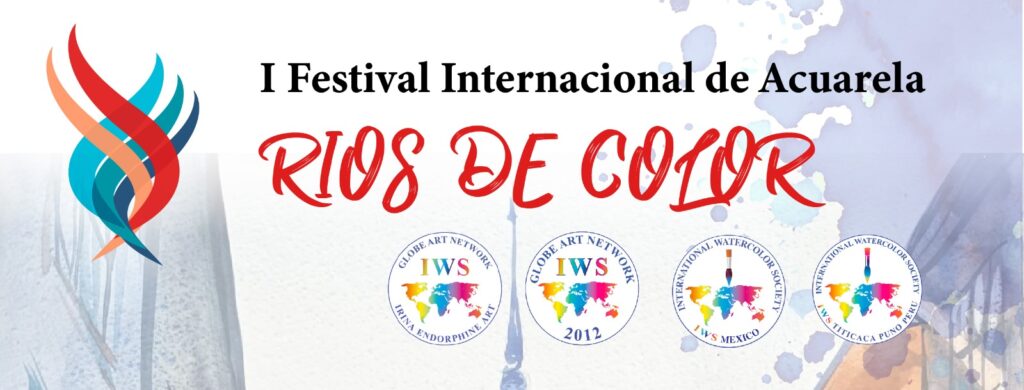
CONCURSO PLEIN AIR: PAISAJE (NATURAL O URBANO)
BASES
- Cada artista puede participar en un concurso puede obtener un descuento de 50% en cualquier de los talleres incluidos en la semana Rios de Acuarela dentro del Festival Ríos de color
- Cupo limitado. Participación: cada artista puede participar en uno o varios concursos además de la exposición internacional. La participación es opcional en cualquiera de los casos.
- Tener más de 18 años.
- La inscripción y pago deberán realizarse en el siguiente link: https://endorphine-art.com/concursos-iws a más tardar el 27 de septiembre de 2023.
- El registro presencial de la gente que ya pagó se efectuará el 28 de septiembre al término de la inauguración del evento en la Casa de la Cultura San Rafael (C. José Rosas Moreno 110, San Rafael, Alcaldía Cuauhtémoc)
- A cada concursante se le entregará media hoja de papel profesional de acuarela de la marca Arches de 300 gramos, sin costo adicional. Formato: horizontal o vertical.
- El resto de los materiales corren por cuenta del participante. Se aceptará la obra hecha con 95% acuarela transparente sobre papel. No se aceptará collage, pastel, tinta china, gouache, estilógrafos y otros medios, imágenes digitales o cualquier forma de edición digital, reproducción o impresión.
- Se admiten hasta dos obras por autor, el papel para la segunda obra se conseguirá con el Comité Organizador y se le asignará un folio antes de iniciar a pintar.
- La obra se realizará in situ. Sólo por causas meteorológicas podrá cambiarse el día del evento.
- Está prohibido fumar y tirar basura en las instalaciones.
- El participante podrá hacer uso de su tiempo como mejor convenga
- Se iniciará el concurso el 29 de septiembre a las 10:30 y terminará a las 14:30 hrs, las obras se deberán entregar al comité para valoración y determinación de los resultados, los cuales serán comunicados el domingo 1 de octubre al finalizar el evento en la ceremonia de clausura en la Casa de la Cultura.
- La decisión del jurado será inapelable. Para la entrega de los premios será imprescindible la presencia del artista. Una vez publicados los resultados, los cuadros serán expuestos en la Casa de la Cultura San Rafael junto con las obras participantes y ganadoras del 1 Festival Internacional “Ríos de Color”.
INDICACIONES
- No fumar
- No introducir alimentos
- No introducir mascotas
- No tirar basura
ALIMENTOS:
La zona cuenta con diversos lugares en sus alrededores para comer a precios accesibles.
ACCESO
- Por avenida Revolución la estación del Metro más cercana es Barranca del Muerto (Línea 7) y luego acercarse al lugar con un trayecto de 5 minutos aproximadamente en taxi u otro transporte público.
- Por la avenida Insurgentes la estación más cercana del Metrobús es La Bombilla y luego caminar 5 minutos por la calle La Paz hasta la avenida Revolución.
- En auto se sugiere estacionarse en los alrededores de la Plaza de San Jacinto
ZONAS DELIMITADAS PARA PINTAR Y ÁREAS DE INTERÉS

PARROQUIA DE SAN JACINTO
Su construcción la debe a los dominicos, pronto se volvió uno de los centros más importantes de educación religiosa. En el interior, el altar principal presume un retablo ornamentado en oro, dedicado a San Jacinto. También se observan pinturas de los siglos XVII y XVIII y otras obras de arte religioso. La fachada luce un escudo de la orden de Santo Domingo de Guzmán; su puerta de madera es del siglo XVII y conserva las bisagras originales de hierro forjado. De aquellos años, todavía está una de las primeras cruces labradas en México.
Entre las iglesias más antiguas de la Ciudad de México, el Monasterio de San Jacinto fue fundado a mediados del siglo XVI como una pequeña ermita, probablemente más como una capilla. Se convirtió en iglesia oficial en 1580. Los dominicos agregaron varias instalaciones destinadas a aprovechar las cascadas cercanas en San Ángel, (antes llamada Tenanitla) incluidos aparatos para hacer funcionar su equipo de hilado y tejido.
La iglesia es pequeña de una sola nave con una gran cúpula en forma de media naranja. El altar
mayor es de estilo churrigueresco o más bien ultrabarroco. No tiene columnas que sostengan la estructura.
Tiene tres cuerpos. El primero es de dimensiones pequeñas y sostiene el conjunto. Es solo una base. El segundo tiene tres calles. En el centro en la parte baja el sagrario y más arriba un nicho con un crucifijo. En las dos calles laterales dos cuadros en medio de arcos de medio punto alargados. Encima de ellos una estructura decorativa que se asemeja a las columnas estípite del churriguera, pero no son tal. El tercero es un remate semicircular al centro un nicho con la figura de San Jacinto, un santo dominico a quien está dedicada la iglesia. Es una obra de gran calidad y está bien conservada.


El convento tiene claustro bajo con cinco arcos de medio punto de mampostería. No tiene claustro alto. Aunque en lo que sería ese espacio hay algunas construcciones.
El parque detrás de la iglesia contiene tanto la Plaza de los Cielos como la Plaza de los Arcángeles, ambas rodeadas por los altos muros del antiguo complejo del monasterio y numerosos ejemplos de arquitectura muy interesante de los siglos XVII y XVIII.
Instalaciones Parroquia de San Jacinto

TEMPLO Y EXCONVENTO DEL CARMEN
Este antiguo convento y templo religioso data del siglo XVII destaca por sus tres hermosas cúpulas, sus altares y pinturas barrocas.
Sobre su origen data de 1595 cuando el cacique indígena de Coyoacán, Felipe de Guzmán Itztlolinque, cedió a los carmelitas de México la tercera parte de una huerta que poseía en Chimalistac, donde hoy se erigió este Ex Convento.


El fray Andrés de San Miguel fue quien diseñó los planos de este colegio y monasterio, a consecuencia de que llegó a la Nueva España en un tortuoso viaje trasatlántico que puso en peligro su vida, prometiendo a la Virgen del Carmen profesar como fraile carmelita si le salvaba la vida. Una vez a salvo y en cumplimiento a este juramento se cambió el nombre por Fray Andrés de San Miguel, el navegante se instruyó como arquitecto de la orden del Carmen dirigiendo la edificación de varios conventos en diferentes estados del país, entre ellos el afamado Desierto de los Leones y el ex convento de San Ángel, hoy Museo de El Carmen. Colocó la primera piedra el 29 de junio de 1615 y la obra inició en 1624 bajo la advocación de San Ángelo Mártir.
Su fachada estuvo inspirada en la de San José de Ávila en España, y el claustro y el frontispicio son ejemplos clásicos del estilo herreriano en el que sobresale su espadaña o campanario y sus tres cúpulas revestidas de azulejo.
Las tres cúpulas, bellas y sabiamente proporcionadas, descansan en tambores y terminan en pequeñas torres con ventanas. Ellas contrastan con lo liso y plano de las paredes de la torre, tan típica de la orden Carmelita. Por muchos años estas cúpulas fueron el monumento principal de San Ángel, e incluso hoy en día continúan siendo el símbolo principal del área.
Los dominios de la compañía abarcaban desde Chimalistac hasta San Jacinto, en el terreno atravesaban los ríos Chico y Magdalena, lo que permitió la prosperidad del pueblo. El paisaje idílico de sus huertos atrajo a la aristocracia capitalina, que construyó aquí sus casas de retiro. Así se fundó San Ángel.

Este Convento y colegio de San Ángel fue edificado para albergar la orden masculina de frailes Carmelitas Descalzos. Sus habitantes practicaban una forma de vida basada en una regla que establecía practicar: la pobreza, castidad, silencio, meditación, oración, trabajo, estudio, entre otros; esto para tener una vida alejada del mundo terrenal.
El inmueble era como una ciudad pequeña que albergaba espacios arquitectónicos adecuados para satisfacer las necesidades básicas de los carmelitas como: celdas, cocina, humilde oficio (baño),
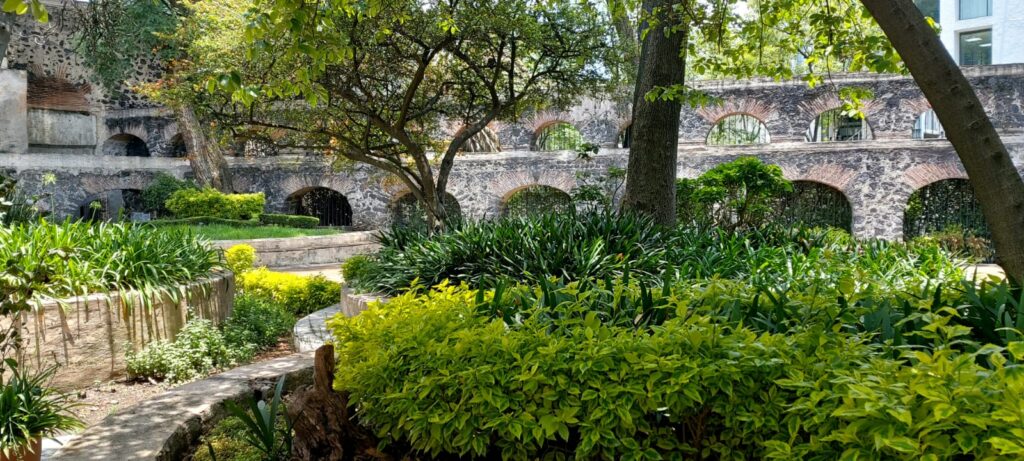
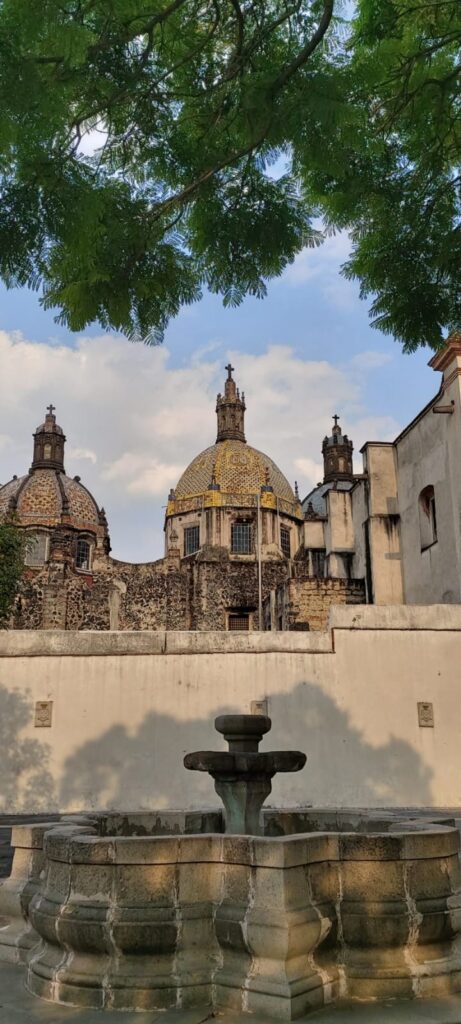
enfermería, acueducto y barbería. Contaba con lugares para incitar la meditación y contemplación como el claustro, la Capilla doméstica y la Sacristía.
Tras la reforma de 1858 en el que se decretó la nacionalización de los bienes de la iglesia, el colegio fue clausurado y su custodia pasó al ayuntamiento. Una parte de estos terrenos fueron usados como cárcel, cuartel y otras funciones.
En 1929 la Secretaría de Educación Pública formalizó la creación del Museo de El Carmen que fue inaugurado en 1938 en el ex convento y colegio de El Carmen, y a partir de 1939 a cargo del Instituto Nacional de Antropología e Historia (INAH), y el templo y su atrio quedando solamente para uso del clérigo.
El Museo del Carmen se ha encargado de conservar, investigar, y divulgar el patrimonio cultural que incluye el edificio del Exconvento con sus jardines, pinturas de grandes artistas de la época y obras de carácter popular como la Virgen del Carmen de loza estannífera, o el Cristo de Mexicaltzingo, elaborado en pasta de caña, además de doce cuerpos momificados no identificados del siglo XIX en excelente estado de conservación, y un acueducto derivado de los ríos Chico y Magdalena.
Instalaciones Templo y Museo del Carmen
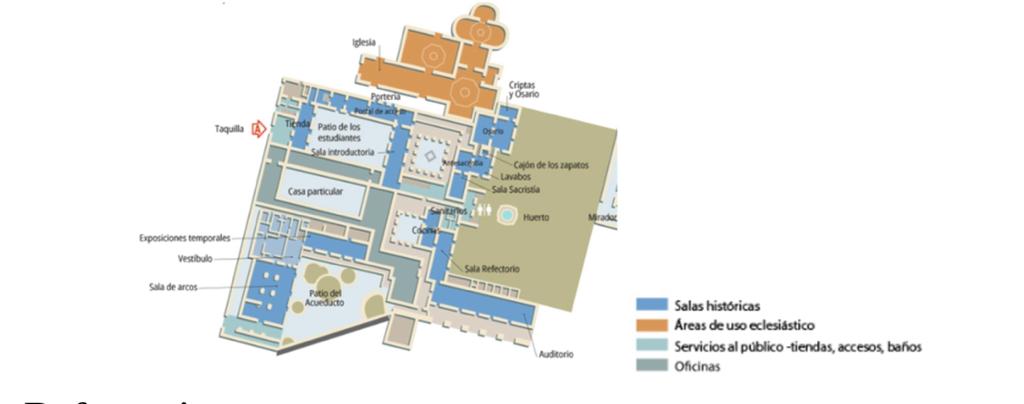
Referencias
Parroquia de San Jacinto de Polonia, escapadas mx: Parroquia de San Jacinto de Polonia – Escapadas por México Desconocido (mexicodesconocido.com.mx)
Aguilar, R. (24 de julio de 2021). Convento de San Jacinto. Etcétera: https://etcetera.com.mx/opinion/convento-san-jacinto/
Arte Colonial (20 de mayo de 2011) San Jacinto: https://artecolonial.wordpress.com/2011/05/20/san-jacinto/
Abundis, J., (21 de julio de 2023). El Museo del Carmen, Antiguo Colegio de San Ángel o de Señora Santa Ana de frailes Carmelitas Descalzos. Lugares INAH. https://lugares.inah.gob.mx/es/zonas-arqueologicas/zonas/opinion/18163-el-museo-de-el-carmen-18163.html?lugar_id=404
PREMIACIÓN DEL CONCURSO
Con respecto a la evaluación de obras del concurso y premiación, para determinar a los ganadores, las obras del concurso serán evaluadas por un jurado compuesto por artistas de prestigio con experiencia en cada una de las temáticas de los concursos.
Se premiarán 3 obras de cada concurso de la siguiente forma:
LUGARES
PREMIOS
PRIMER LUGAR
Premio en efectivo. $5,000 PESOS MEXICANOS (US$250 DÓLARES AMERICANOS).
SEGUNDO LUGAR
Premio en materiales de arte
TERCER LUGAR
Premio en materiales de arte
English
PLEIN AIR CONTEST: LANDSCAPE (NATURAL OR URBAN)
RULES
- Space limited to 30 contestants.
- Be over 18 years old.
- Registration and payment must be made at the following link: https://endorphine-art.com/concursos-iws no later than September 27, 2023.
- The face-to-face registration of contestants who have already paid will take place on September 28 at the end of the inauguration of the event at the Casa de la Cultura San Rafael (C. José Rosas Moreno 110, San Rafael, Alcaldía Cuauhtémoc, Mexico City)
- Each contestant will be given half a sheet of Arches brand professional watercolor paper of 300 grams, at no additional cost. Format: horizontal or vertical.
- The rest of the materials are at the expense of the participant. Only work made with 95% transparent watercolor on paper will be accepted. Collage, pastel, Indian ink, gouache, stylographs and other media, digital images or any form of digital editing, reproduction or printing will not be accepted.
- Up to two works per author are admitted, the paper for the second work should be requested to the Organizing Committee and a folio will be assigned before starting to paint.
- The work will be carried out on site. Only due to weather conditions, the event date could be changed.
- It is forbidden to smoke and litter on the premises.
- Participants may use their time as best suits them.
- The contest will begin on September 29 at 10:30 and will end at 14:30, the works must be delivered to the Committee for the evaluation and determination of the results, which will be announced in the Casa de Cultura.
- The jury’s decision will be final. For the delivery of the prizes, the presence of the award-winning will be essential. Once the results are published, the paintings will be exhibited at the Casa de la Cultura San Rafael along with the participating and winning works of the 1st International Festival “Rivers of Color”.
DIRECTIONS
- No smoking
- Do not bring food
- No pets allowed
- No littering
LUNCH:
- The area has several places in its surroundings to eat at affordable prices.
ACCESS
- By Avenida Revolución the nearest Metro station is Barranca del Muerto (Line 7) and then approach the place by taxi or other public transport (approximately 5 minutes)
- On Insurgentes Avenue the nearest Metrobus station is La Bombilla and then walk 5 minutes along La Paz Street to Revolution Avenue.
- Cars may be parked in the surroundings of Plaza San Jacinto.
AREAS FOR PAINTING AND AREAS OF INTEREST

PARISH OF SAN JACINTO
Its construction is due to the Dominicans, soon became one of the most important centers of religious education. Inside, the main altar boasts an altarpiece ornamented in gold, dedicated to San Jacinto. There are also paintings of the seventeenth and eighteenth centuries and other works of religious art. The façade sports a shield of the order of Santo Domingo de Guzmán; its wooden door is from the seventeenth century and retains the original wrought iron hinges. From those years, there is still one of the first crosses carved in Mexico.
Among the oldest churches in Mexico City, the Monastery of San Jacinto was founded in the mid-sixteenth century as a small hermitage, probably more like a chapel. It became an official church in 1580. The Dominicans added several facilities intended to take advantage of nearby waterfalls at San Angel, (formerly called Tenanitla) including apparatus to operate their spinning and weaving equipment.
The church is small with a single nave with a large dome in the shape of a half orange. The main altar is Churrigueresque or rather ultra-baroque style. It does not have columns that support the structure.
It has three bodies. The first is of small dimensions and supports the whole. It’s just a foundation. The second has three streets. In the center in the lower part the tabernacle and above a niche with a crucifix. In the two side streets two paintings in the middle of elongated semicircular arches. Above them a decorative structure that resembles the stipe columns of the churriguera, but they are not such.
The third is a semicircular finial in the center of a niche with the figure of San Jacinto, a Dominican saint to whom the church is dedicated. It is a work of great quality and is well preserved


The convent has a low cloister with five semicircular arches of masonry. It has no high cloister. Although in what would be that space there are some constructions.
The park behind the church contains both the Square of Heaven and the Square of the Archangels, both surrounded by the high walls of the old monastery complex and numerous examples of very interesting architecture from the seventeenth and eighteenth centuries.
Parish of de San Jacinto Map

TEMPLE AND FORMER CONVENT OF CARMEN
This old convent and religious temple dates from the seventeenth century and stands out for its three beautiful domes, its altars and baroque paintings.
About its origin dates from 1595 when the indigenous cacique of Coyoacán, Felipe de Guzmán Itztlolinque, ceded to the Carmelites of Mexico the third part of an orchard that he owned in Chimalistac, where today this Ex Convent was erected


Fray Andrés de San Miguel was the one who designed the plans of this school and monastery, as a result of which he arrived in New Spain on a tortuous transatlantic journey that endangered his life, promising the Virgen del Carmen to profess as a Carmelite friar if he saved his life. Once safe and in compliance with this oath, the name was changed to Fray Andrés de San Miguel.
The navigator was trained as an architect of the order of Carmen directing the construction of several convents in different states of the country, including the famous Desert of the Lions and the former convent of San Ángel, today Museum of El Carmen. He laid the first stone on June 29, 1615 and the work began in 1624 under the invocation of San Angel Martir.
Its façade was inspired by that of San José de Ávila in Spain, and the cloister and frontispiece are classic examples of the Herrerian style in which its belfry or bell tower and its three domes covered with tile stand out.
The three domes, beautifully and wisely proportioned, rest on drums and end in small towers with windows. They contrast with the smooth and flat walls of the tower, so typical of the Carmelite order. For many years these domes were the main monument of San Angel, and even today they continue to be the main symbol of the area.
The domains of the company ranged from Chimalistac to San Jacinto, in the terrain crossed the Chico and Magdalena rivers, which allowed the prosperity of the town. The idyllic landscape of its orchards attracted the capital’s aristocracy, who built their retirement homes here. This is how San Angel was founded.

This Convent and College of San Angel was built to house the male order of Discalced Carmelite friars. Its inhabitants practiced a way of life based on a rule that established practice: poverty, chastity, silence, meditation, prayer, work, study, among others; This to have a life away from the earthly world.
The building was like a small city that housed adequate architectural spaces to meet the basic needs of the Carmelites such as: cells, kitchen, humble trade (bathroom), infirmary, aqueduct and barbershop. It had places to incite meditation and contemplation such as the cloister, the domestic chapel and the sacristy.


After the reform of 1858 in which the nationalization of the assets of the church was decreed, the school was closed and its custody passed to the town hall. A part of this land was used as a prison, barracks and other functions.
In 1929 the Ministry of Public Education formalized the creation of the Museum of El Carmen that was inaugurated in 1938 in the former convent and school of El Carmen, and from 1939 in charge of the National Institute of Anthropology and History (INAH), and the temple and its atrium remaining only for use by the clergy.
The Museo del Carmen has been responsible for preserving, researching, and disseminating the cultural heritage that includes the building of the Exconvento with its gardens, paintings by great artists of the time and works of popular character such as the Virgen del Carmen of stanniferous
earthenware, or the Christ of Mexicaltzingo, made of cane paste, in addition to twelve unidentified mummified bodies of the nineteenth century in excellent condition, and an aqueduct derived from the Chico and Magdalena rivers.
ITemple and Former Convento of Carmen Map

References
Parroquia de San Jacinto de Polonia, escapadas mx: Parroquia de San Jacinto de Polonia – Escapadas por México Desconocido (mexicodesconocido.com.mx)
Aguilar, R. (24 de julio de 2021). Convento de San Jacinto. Etcétera: https://etcetera.com.mx/opinion/convento-san-jacinto/
Arte Colonial (20 de mayo de 2011) San Jacinto: https://artecolonial.wordpress.com/2011/05/20/san-jacinto/
Abundis, J., (21 de julio de 2023). El Museo del Carmen, Antiguo Colegio de San Ángel o de Señora Santa Ana de frailes Carmelitas Descalzos. Lugares INAH. https://lugares.inah.gob.mx/es/zonas-arqueologicas/zonas/opinion/18163-el-museo-de-el-carmen-18163.html?lugar_id=404
CONTEST AWARDS
With regard to the evaluation of works of the contest and awards, to determine the winners, the works of the contest will be evaluated by a jury composed of prestigious artists with experience in each of the themes of the contests.
Three works from each contest will be awarded as follows:
PLACES
AWARDS
FIRST PLACE
Cash prize $5,000 PESOS MEXICANOS (US$250 AMERICAN DOLLARS).
SECOND PLACE
Art supplies
THIRD PLACE
Art supplies

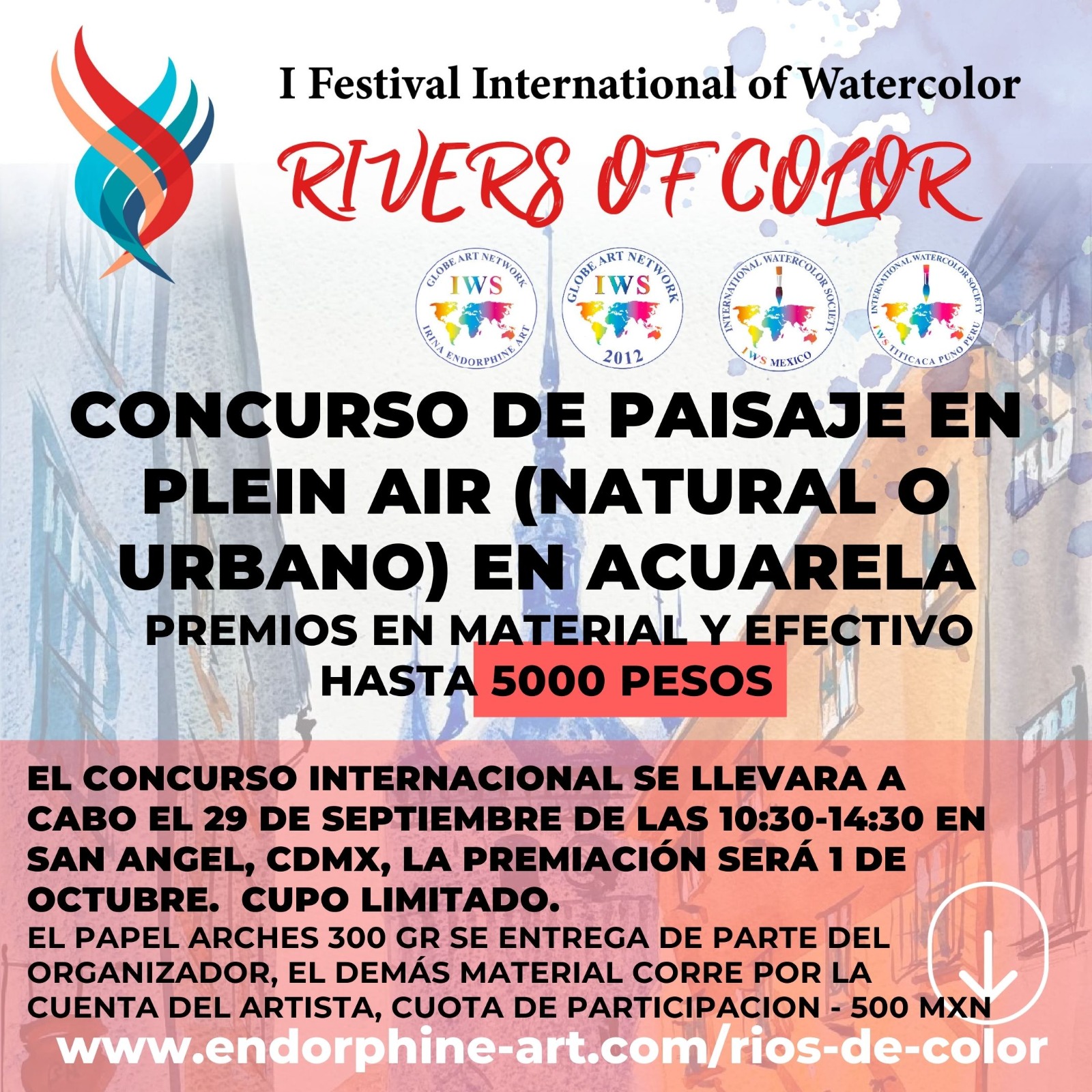


Valoraciones
No hay valoraciones aún.